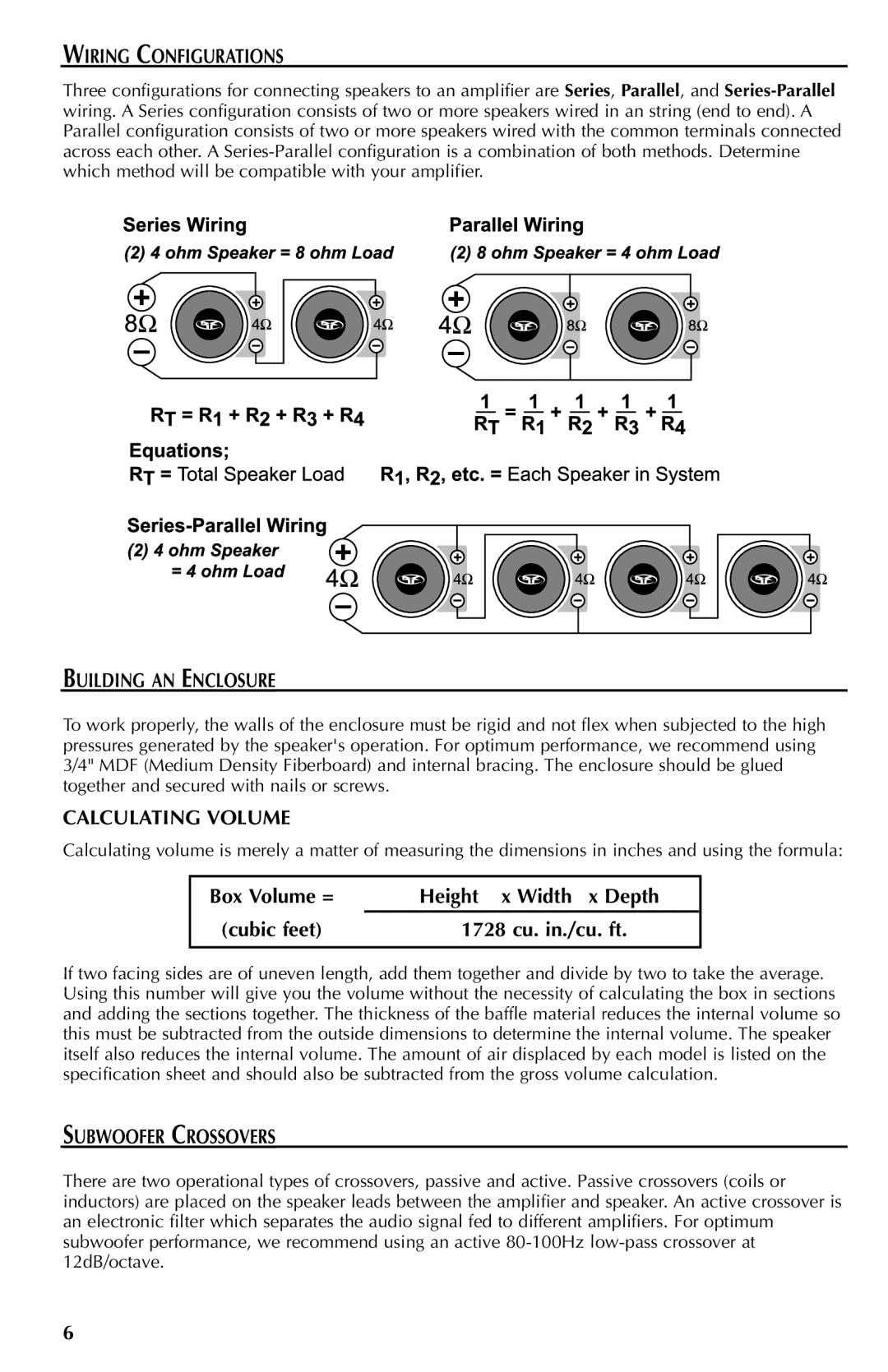RFP4406, RFP4806, RFP4412, RFP4808, RFP4410 specifications
Rockford Fosgate is renowned for producing high-performance audio systems, particularly in the realm of car subwoofers. Among their impressive lineup, the RFP4415, RFP4815, RFP4810, RFP4812, and RFP4408 stand out as powerful subwoofers designed to deliver deep, impactful bass without compromising sound clarity.Starting with the RFP4415, this 15-inch subwoofer is engineered for serious bass enthusiasts. It features a robust dual 2-ohm voice coil system that allows for flexible wiring configurations. The sub is constructed with a rigid poly cone and a durable rubber surround, which effectively minimizes distortion and enhances overall sound quality. The integrated cast aluminum frame adds strength and stability, ensuring the subwoofer performs reliably even under high power conditions.
Moving on to the RFP4815, this impressive 18-inch sub delivers earth-shaking bass. It utilizes a unique cooling system incorporating spider venting to manage heat effectively, prolonging the lifespan of the subwoofer. The RFP4815 also boasts a dual 1-ohm voice coil, providing versatility in ohm configurations, making it an excellent choice for powerful amplification setups.
The RFP4810 is a 10-inch subwoofer that combines compact design with formidable output. It features a high-temperature voice coil for improved thermal resistance, allowing for extended playtime without sacrificing performance. Rockford Fosgate’s VAST (Vertical Attach Surround Technique) technology enhances the woofer's surface area, contributing to superior low-frequency response and giving the RFP4810 an edge in terms of efficiency.
The RFP4812 is another pivotal model in this lineup. This 12-inch subwoofer is designed with a high-excursion cone that delivers deeper bass while maintaining clarity. With its dual voice coil options and a durable rubber surround, this subwoofer is perfect for those seeking powerful bass in a mid-sized format.
Finally, the RFP4408 is an 8-inch subwoofer that excels in tight spaces without sacrificing performance. Its compact size makes it ideal for vehicles with limited space, yet it still provides impressive bass response. Equipped with a reinforced polypropylene cone and a stiff rubber surround, the RFP4408 is perfect for smaller systems that demand high-quality sound.
In summary, Rockford Fosgate’s RFP series subwoofers, including the RFP4415, RFP4815, RFP4810, RFP4812, and RFP4408, offer a wide range of options for different audio needs. With their advanced technologies, robust build quality, and superior sound performance, these subwoofers are designed to satisfy the most discerning bass aficionados. Whether in a compact or large setup, Rockford Fosgate’s commitment to excellence ensures a remarkable listening experience.

